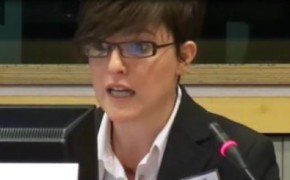In Aragon there is legal form with the goal of protecting the heritage of a singular territory, combining natural attraction and cultural heritage
A “cultural park” is a legal form appointed by the Aragon Government in 1997 in order to allow the management the exceptional cultural and natural heritage.
Teruel province has 4 of the current 7 cultural parks in the Aragon Region and they belong to the UNESCO’s World Heritage Rock Art of the Mediterranean Basin on the Iberian Peninsula - largest group of rock-art sites in Europe.
The Cultural Park of Martín River (CPMR) involves 2 UNESCO’s World Heritages: the Rock Art and Aragon´s Mudejar style. CPMR also gathers a rich geological, paleontological, a great variety of protected species of fauna and flora and other classified heritage such as dry-stone buildings, fortifications and castles and old craft industrial heritage.
The region is facing a huge demographic and territorial challenge that put in risk the preservation of its rich cultural heritage. This law intends to prevent it.
Aragon´s legal form promotes citizens’ participation with the representation of the municipalites and the local associations relevants in heritage preservation. At a local level, it offers a way towards repurposing the territory by rural tourism and enables a sustainable development for sparsely populated areas with scarce resources.
Additionally, Teruel is one of the territories involved in the carbon mining transition and in this context, tourism and hospitality sectors are crucial for the socio-economic development
Resources needed
Staff:1 person in the cultural park + 8 managers from each local museums
Fixed budget of 60.000€ + conservation and protections variable budget per year, depending of subsidies (from 30.000, others 100.000€).
Each municipality make a contribution but the main part is regional
Evidence of success
The work developed between scientific and public entities, in adition demostrated interest was the formula to guarante the heritage assets integrity
The creation of an inter-municipal association between municipalities, associations and scientific institutions
River Martin was the model for the Cultural Parks law in 97 . Today there are 7 Cultural Parks in Ara
From250km2 to 5,500 km2 of intervention
20.000 visitors/year
Jobs creation (8 direct and 80 indirectly)
Public investment of 1M€
Difficulties encountered
The major challenges were related to budget issues, involvement of the population, majors’ interests and political issues. The solutions for these challenges was the creation of a perfect balance between the heritage protection and the valorisation of the region as a touristic attraction
Potential for learning or transfer
The different administrations and entities actions have been oriented towards the protection and restoration, sustainable rural development and territorial balance. Cultural Parks have proved to be an effective means for sustainable development in the rural areas.
In many territories, nature and heritage is mixed so this protection figure is the perfect solution to this reality. Most of the heritage is not isolated they belong to a path or a route, so the park is a way of looking at the reality in perspective, not as an isolated example. The impact of the park at an economical level is high and is a good point of attraction that makes a the economy more dynamic.
In terms of identity, the locals feel proud and raise awareness about their past. The legal framework allowed entrepreneurs to stay, as natural and cultural heritage are in good conditions and promoted. The region is a reference in what regards tourism and silver economy, a market niche to be explored, is a win-win solution.
Please login to see the expert opinion of this good practice.
Tags: Accessibility, Administration, Art, Biodiversity, Business, Circular economy, Community, Heritage, Landscape, Mountains








